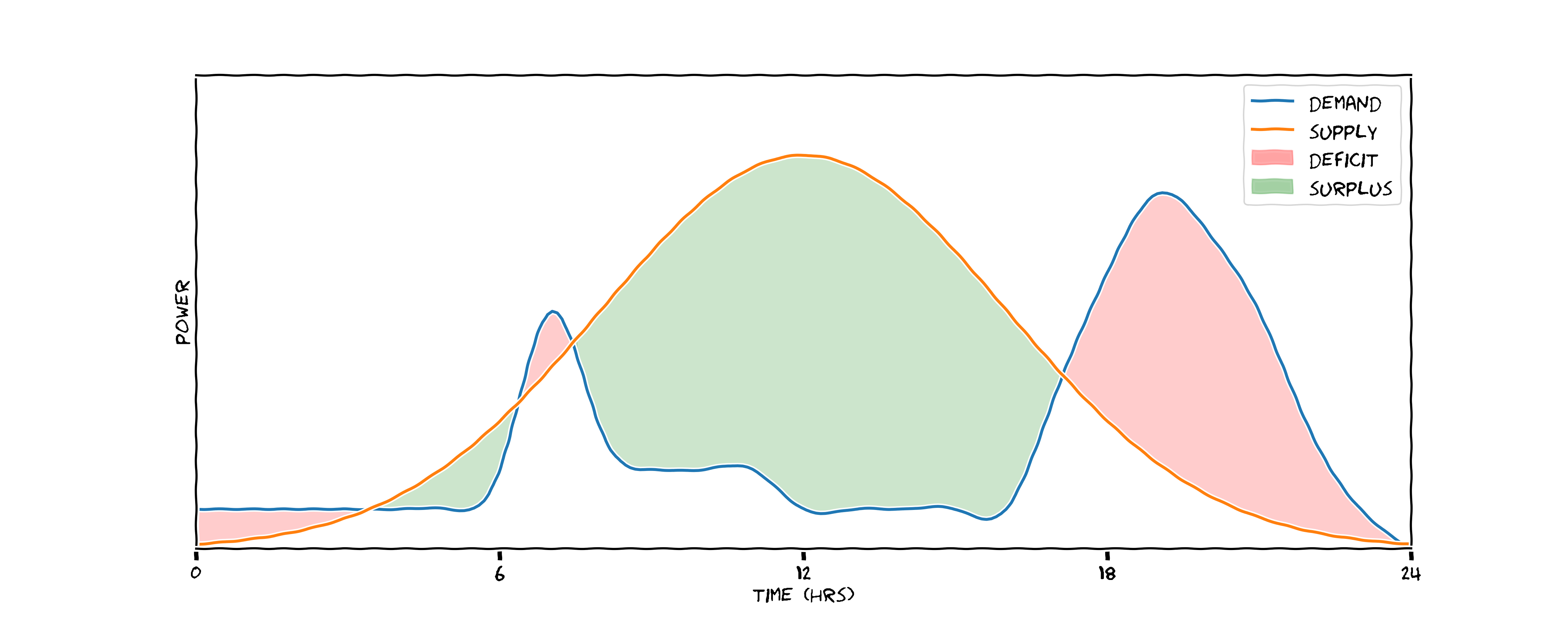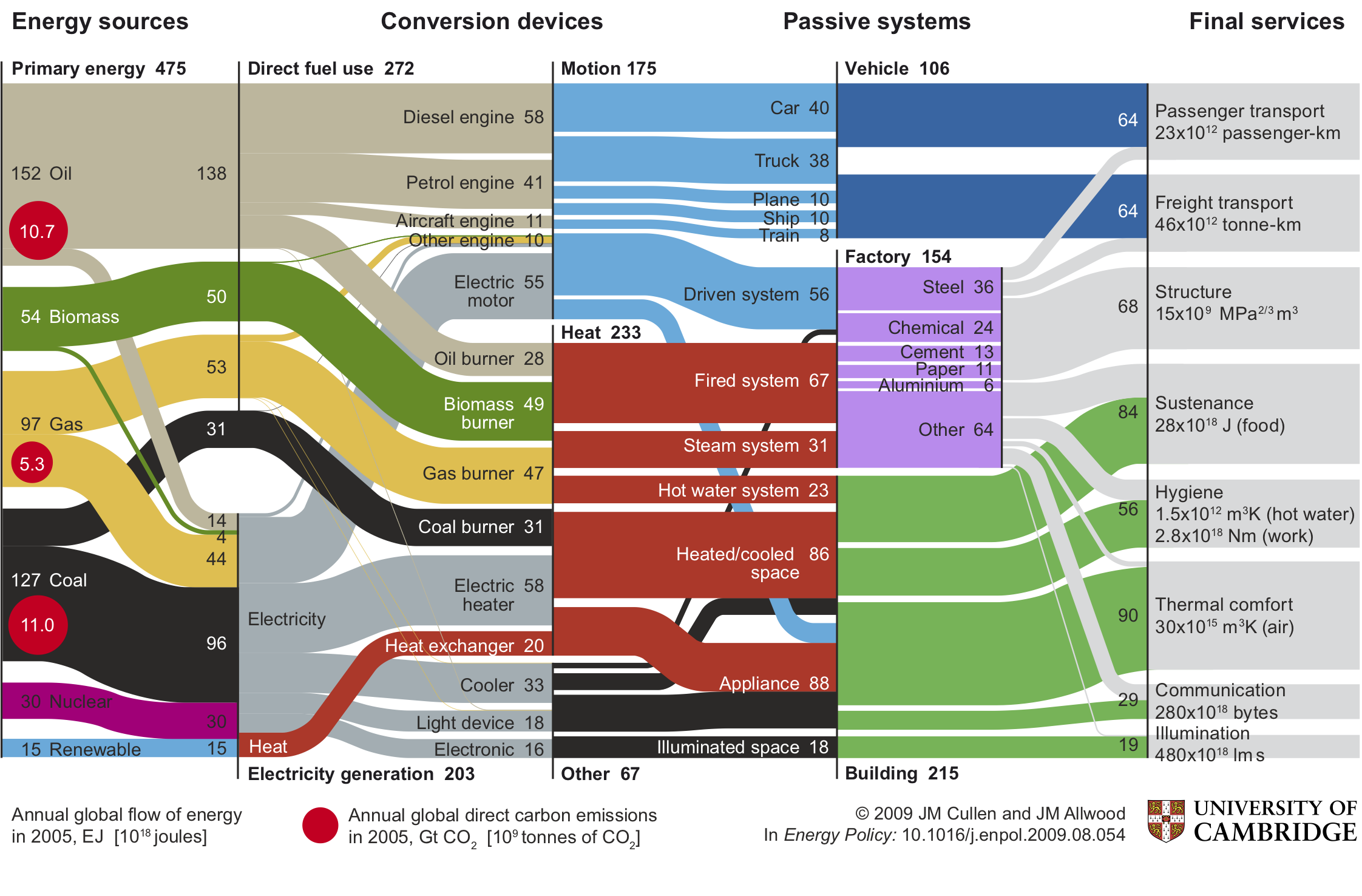Space Invasion, Space Invaders, and Climate Change Mitigation¶
Scott Jeen¶
Jesus College MCR, 3rd June 2021¶
0. Outline¶
1. Space Invasion: the footprint of climate change mitigation
2. Space Invaders: learning to control complex systems optimally
3. An Emission-minimisation Game
1. Space Invasion¶
High Carb(on) Diet¶
Low Carb(on) Diet¶

Our Energy Diet¶
💡 → 1kWh
🥤 → 0.6kWh
🛁 → 5kWh
🚗 → 10kWh
💁♀️ → 125kWh/day or 5kW → 🎛🎛
after MacKay (2008)
Your Allotment for Energy Generation¶
- UK population: 66.65 million
- UK land area: 242,495 km²
- Your allotment: 3600m² ~ half a football pitch
- Your life: ~2.5 W/m$^2$

after MacKay (2008)
Space Requirements of Energy Generating Devices¶
Your life: ~2.5 W/m$^2$
| Technology | ~ Power Per Unit Land Area | Zero Operational Emissions |
|---|---|---|
| Wind | 2.7 W/m$^2$ | 💚 |
| Biomass | 1 W/m$^2$ | 🤥 |
| Solar | 6 W/m$^2$ | 💚 |
| Hydropower | 0.9 W/m$^2$ | 🤥 |
| Geothermal | 3 W/m$^2$ | 💚 |
| Natural Gas | 1300 W/m$^2$ | ⛔️ |
| Coal | 125 W/m$^2$ | ⛔️ |
| Oil | 180 W/m$^2$ | ⛔️ |
| Nuclear | 300 W/m$^2$ | 💚 |
Data: van Zalk & Behrens (2018)








I'm interested in how the small cyan line in the bottom left hand corner: renewable energy, intergrates with the energy conversion devices, and final services. Although small on this diagram, this was the global energy mix in 2005, by 2050 we expect renewable energy to supply approximately 70% of world energy. Unlike fossil fuel power stations, we cannot control when renewable energy resources will produce electricity because their ability to do so is weather dependent. For example, solar panels will produce energy during the daytime when the sun has risen, but not at night when the sun has set. We therefore say renewable energy technologies are intermittent. I'll explain the intermittency problem visually:
The Intermittency Problem¶



Intermittency: A non-trivial optimsation problem¶
Stochastic supply:
- Weather-dependent
- Need accurate predictions of supply at varied time horizons: 5mins; 5 hours; 5 days
Stochastic demand:
- Depending on scenario, affected by countless variables
- Household setting: outdoor temperature; time of day; day of week
- Industrial setting: sales forecasts; raw material delivery schedules
2. Space Invaders¶
from IPython.display import YouTubeVideo
YouTubeVideo('TmPfTpjtdgg', height=400, width=800)
YouTubeVideo('DG17IKcDt8c', height=400, width=800)
3. An Emission-Minimising Game¶


3.1 Formulating the Game¶
Moves:
- Chiller control: $\sum_{n=1}^6 a_t^n \in \mathcal{A}$, with $\mathcal{A} = [0\text{kW}, 5\text{kW}]$
Goal:
Minimise energy-use: $\min{E_t}$, while
Maintain temperature: $T_t \leq 3^0C$
Environment dynamics (transition function):
- ???
- $\mathbb{P}(s_{t+1}, r_{t} | s_t, a_t)$
Learning the Environment Dynamics/Transition Function¶

3.2 Playing the Game¶

3.3. Winning the Game¶


Thanks!¶
- Website: https://enjeeneer.io
- Questions?
References¶
Bossard, M., Feranec, J., & Otahel, J. (2000). CORINE land cover technical guide: Addendum 2000.
Cullen, J. M., & Allwood, J. M. (2010). The efficient use of energy: Tracing the global flow of energy from fuel to service. Energy Policy, 38(1), 75-81.
MacKay, D. (2008). Sustainable Energy-without the hot air. UIT cambridge.
Mnih, V., Kavukcuoglu, K., Silver, D., Graves, A., Antonoglou, I., Wierstra, D., & Riedmiller, M. (2013). Playing atari with deep reinforcement learning. arXiv preprint arXiv:1312.5602.
Silver, D., Schrittwieser, J., Simonyan, K., Antonoglou, I., Huang, A., Guez, A., ... & Hassabis, D. (2017). Mastering the game of go without human knowledge. nature, 550(7676), 354-359.
Silver, D. (2015). Lecture 1: Introduction to reinforcement learning. Google DeepMind, 1, 1-10.
van Zalk, J., & Behrens, P. (2018). The spatial extent of renewable and non-renewable power generation: A review and meta-analysis of power densities and their application in the US. Energy Policy, 123, 83-91.

